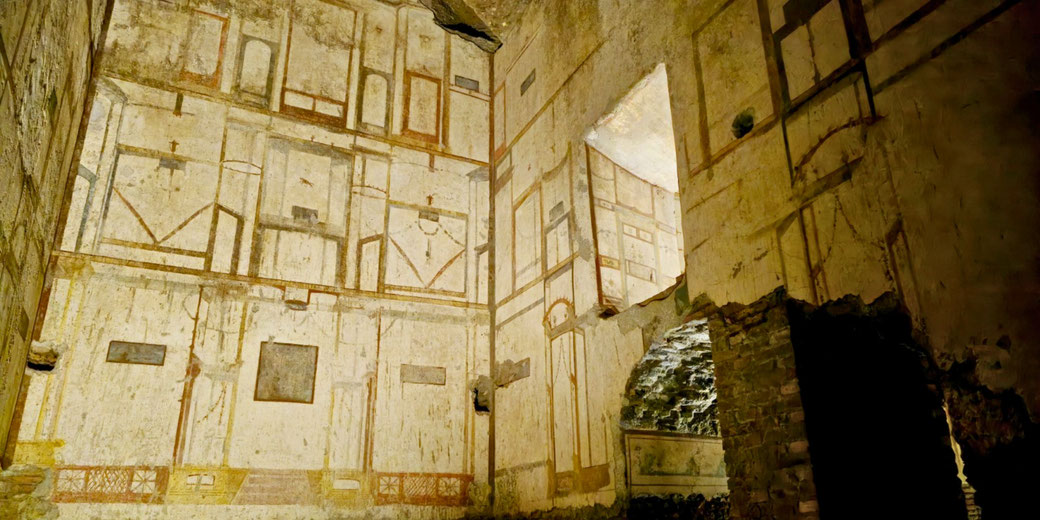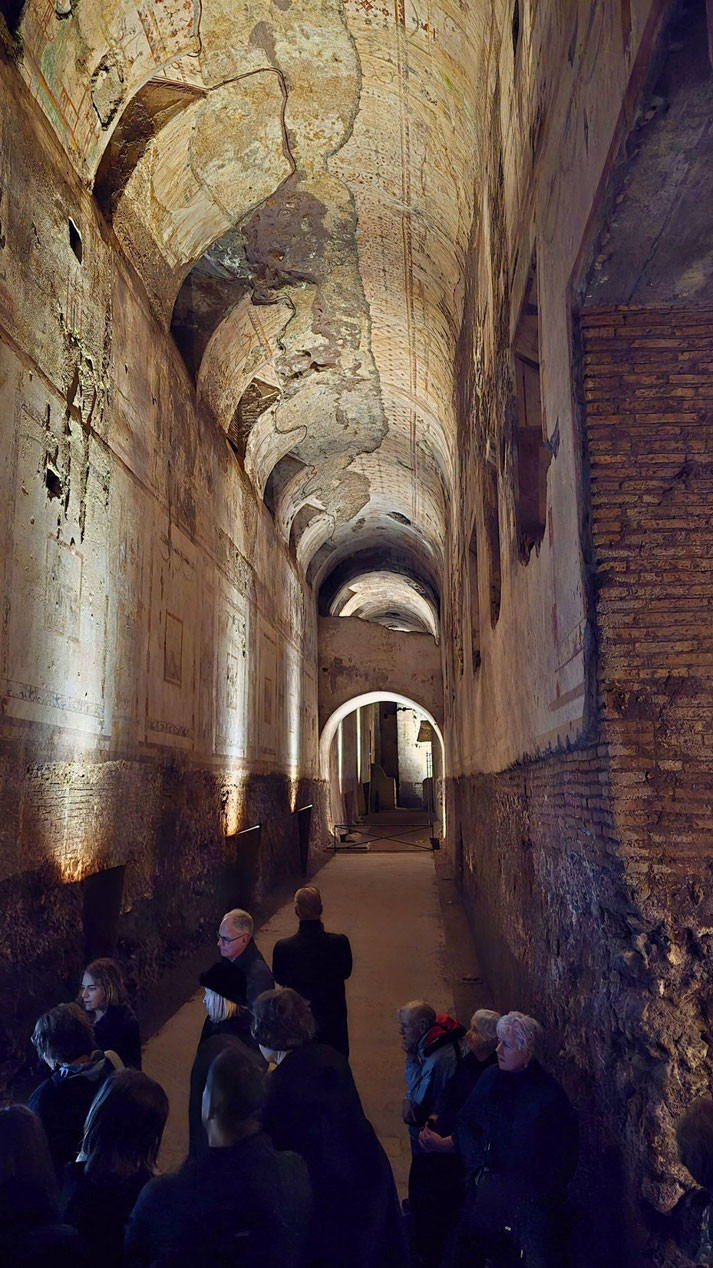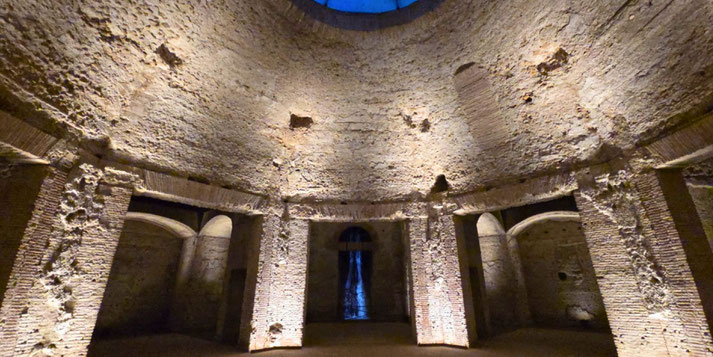How Nero's legendary golden palace bankrupted the Roman Empire

Among the most extravagant structures ever built in ancient Rome, Nero’s Domus Aurea surpassed most earlier palaces in both scale and indulgence.
After the Great Fire devastated the city in AD 64, the emperor transformed the ruined centre into a large private estate that promoted his image, as its large-scale design and great luxury drained imperial finances and likely contributed to growing anger that weakened the Julio-Claudian dynasty.
What was the Domus Aurea?
Construction began soon after the fire swept across central Rome, which cleared large areas on the Palatine, Caelian and Esquiline Hills.
As the city was still recovering by late AD 64, Nero claimed large areas of land that once belonged to private homes, temples and civic buildings, and his architects, Severus and Celer, received instructions to create a palace that combined the private comforts of a villa with the official spaces of a government residence and that operated as a ritual sanctuary.
Pliny the Elder later remarked that the structure had made many earlier buildings seem worthless by comparison.
According to Roman sources, the palace site extended over 100 to 300 acres, though modern archaeological estimates place the main area of the Domus Aurea at around 100 to 150 acres, or roughly 40 to 60 hectares.
Some larger figures likely included later imperial parklands in their estimates. At the heart of the estate stood a large entrance hall that contained a 35-metre-tall bronze statue of Nero who was depicted as Sol, the Roman sun god.
The sculptor Zenodorus completed the statue as part of Nero’s larger effort to associate himself with religious authority.
Later emperors, possibly including Vespasian or Hadrian, may have reused the statue as an image of Sol, the Roman sun god, whose face ancient sources do not confirm was changed.
To increase the visual effect, the architects included open courtyards linked to vaulted ceilings and to terraces that provided panoramic views.
The palace abandoned the city’s traditional street grid and replaced urban neighbourhoods with private grounds: a break with Roman tradition that shocked many citizens who expected the emperor to restore public buildings rather than build a personal retreat.
Writers such as Tacitus and Suetonius recorded the anger that followed Nero’s seizure of public land because he cleared sacred sites and civic monuments for his own use and showed a lack of respect for Rome’s customs and laws.
His decision to build a pleasure palace in the city centre became a representation of tyranny.
How lavish was it?
The Domus Aurea surpassed all previous examples of imperial luxury. Suetonius claimed that Nero only judged it complete when he could describe it as “fit for human habitation.”
Walls glittered with gold leaf, ceilings rotated during banquets, and hidden devices reportedly scattered perfume and petals over guests as they reclined on comfortable couches.
Each room displayed rare marbles and ivory panelling, matched by imported stone from Egypt, Asia Minor and North Africa.
Famulus was regarded as one of the most celebrated painters of the time, and he oversaw the decorative programme.
He reportedly filled the walls and vaults with frescoes that showed mythological scenes set beside floral patterns and painted vistas.

To add to these images, engineers used concrete vaulting to create octagonal dining halls and domed reception rooms that were unlike earlier rooms.
The ceiling of the octagonal dining room reportedly also rotated, possibly by a mechanism driven by water pressure.
At the centre of the palace grounds, Nero ordered the construction of an artificial lake surrounded by colonnades and gardens.
Aqueducts supplied water to fountains that fed fishponds and decorative basins, while statues from Greece lined the walkways, and exotic animals wandered through groves designed to imitate the countryside.
This display aimed to show that the emperor had bent nature to his will.
For guests invited to the palace, every detail reinforced Nero’s power. He organised detailed architectural layouts and staged theatrical shows that displayed his wealth and aimed to silence critics.
However, such extravagance came at a price that would soon threaten the financial stability of the Roman Empire.

The crushing cost to the empire
The expense of constructing the Domus Aurea put pressure on the treasury at a time when Rome could least afford it.
The Roman treasury is estimated to have typically managed an annual income of around 800 million sesterces and struggled under the burden, so to raise funds Nero imposed harsh taxes on the eastern provinces and demanded contributions from allied kings, while placing additional pressure on publicani, the tax contractors, to extract greater revenues.
Trade declined as local economies weakened under repeated taxes.
Soon after, he altered the empire’s coinage by reducing the silver content of the denarius from approximately 98% to 93.5% and lowered the overall weight of silver in each coin, thereby producing lower-quality coins that weakened confidence in the currency.
This created inflation and prompted merchants to demand older coins with full silver value.
Confidence in the imperial currency likely dropped sharply, especially in cities that depended on stable exchange rates for grain, wine, and luxury goods.
As discontent grew, Nero launched a campaign of property seizures presented as legal punishment.
When he accused prominent senators and equestrians of treason, he forced them to take their own lives and seized their estates.
Those affected included several senators and wealthy equestrians who were accused of conspiracy or disloyalty.
Although Lucius Antistius Vetus was not definitively linked to the Pisonian Conspiracy of AD 65, he was among the prominent figures who faced suspicion.
Seneca, who had been Nero’s tutor, was also forced to commit suicide. Their wealth flowed into the palace project, but their deaths likely increased fear among the elite.
Eventually, revolt spread from the provinces to the heart of the empire. In Gaul, Gaius Julius Vindex raised a rebellion, while in Hispania, Galba proclaimed himself defender of the Senate.
They said Nero's greed and wastefulness showed he was unfit to rule. The Domus Aurea became the clearest example of his abuse of power, and his suicide in AD 68 confirmed that the palace had arguably helped bring down the dynasty.
Destruction of the Domus Aurea
With Nero gone, his successors acted quickly to erase the memory of his rule.
Galba, Otho, and Vitellius dismantled parts of the palace, stripped its walls of precious materials, and sold its contents to pay troops, because they seemed to have understood that the building had come to symbolise imperial excess and betrayal of public duty.
Soon after, Vespasian reclaimed the land for civic use. He drained the artificial lake and ordered the construction of the Flavian Amphitheatre, later known as the Colosseum, around AD 70, to reverse Nero’s theft of public land and largely turned the site into a place for public entertainment and events.
Later emperors built new structures over what remained of the palace. Domitian used some of the foundations for his own residence on the Palatine Hill, and Trajan buried the surviving halls beneath his bath complex.
With each new project, the Domus Aurea gradually disappeared further beneath the city.
Although parts of the building had survived structurally intact, they had largely lain hidden and forgotten under later construction for centuries.
No official textual record had preserved its full layout, and later Romans had largely avoided mentioning it.
However, partial plans were recovered over time from surviving structures and Renaissance-era sketches.
Rediscovering the ruins
Around 1480, a young Roman who was exploring the Oppian Hill reportedly fell into a cavity and found himself inside a decorated chamber.
Though some accounts name him as Pietro da Modena, later sources such as Giorgio Vasari do not confirm his identity.
Word spread among artists, and soon painters such as Raphael, Michelangelo, Pinturicchio, Filippino Lippi, and Ghirlandaio entered the ruins by torchlight to study the frescoes that adorned the walls and ceilings.
They called the site a grotto, and the decorative style they observed helped give birth to the term "grotesque".
Inspired by the delicate patterns, surreal figures, and flowing designs, Renaissance artists adapted the motifs for their own work.
Nero’s palace, once buried in disgrace, returned as a model of forgotten elegance.
In later centuries, archaeologists uncovered more of the buried rooms, including octagonal halls, frescoed vaults, and cleverly engineered skylights.
However, exposure to air and moisture began to damage the paintings, which had survived for so long in sealed darkness.
Conservationists now regulate access and monitor conditions to preserve what remains.
Today, the Domus Aurea lies beneath modern Rome. Although most of it remains underground, guided tours and virtual reconstructions offer glimpses into its former splendour.
As a monument to excess, it reminds historians of the costs that followed Nero’s obsession with personal glory.
What do you need help with?
Download ready-to-use digital learning resources
Copyright © History Skills 2014-2025.
Contact via email
With the exception of links to external sites, some historical sources and extracts from specific publications, all content on this website is copyrighted by History Skills. This content may not be copied, republished or redistributed without written permission from the website creator. Please use the Contact page to obtain relevant permission.





